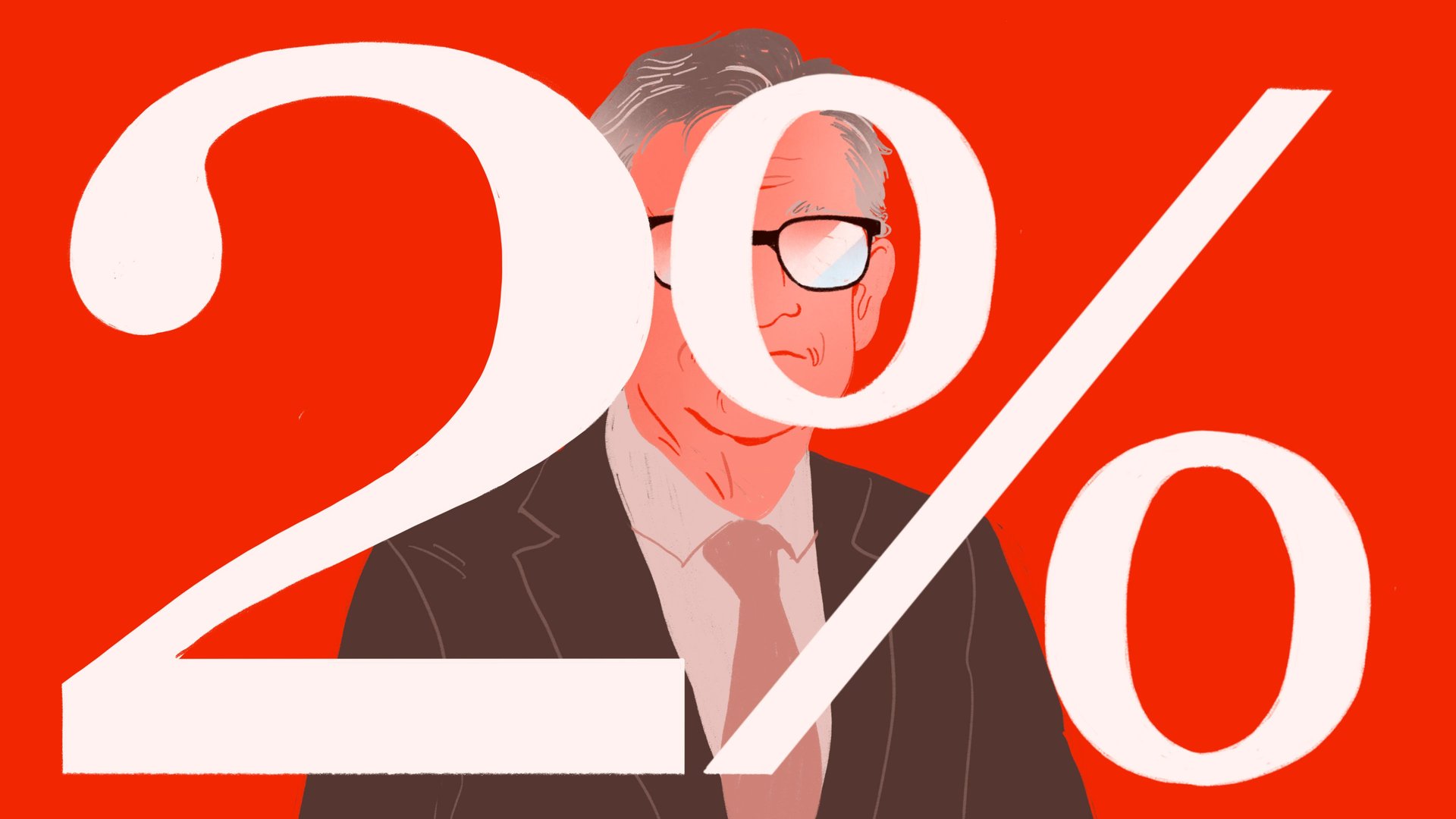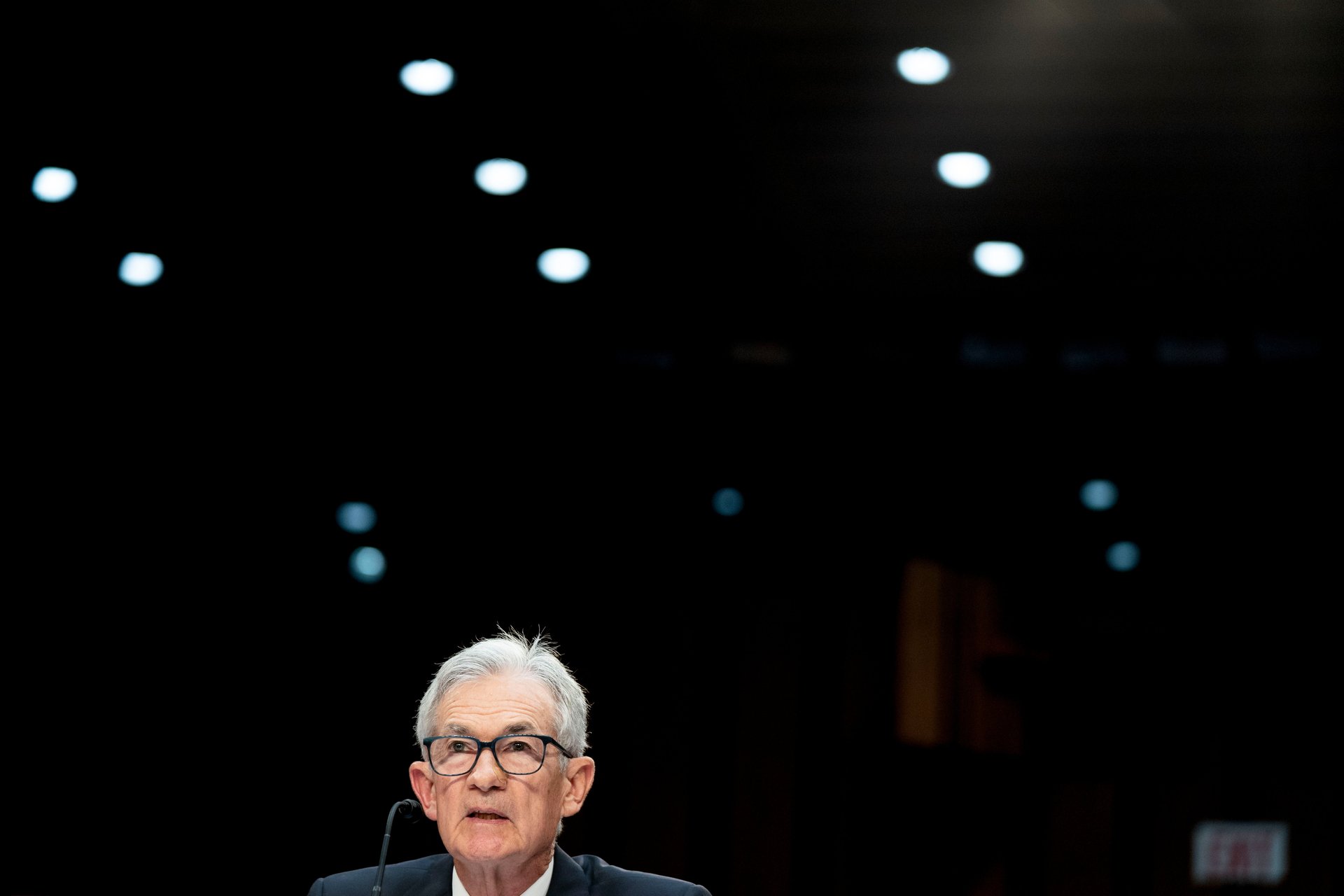Jerome Powell's 2% obsession
Behind the Fed chair's crusade to bring inflation down to a magic number

Hello, Quartz members!
Suggested Reading
Happy Saturday. While the French spend this weekend remembering how they stormed the Bastille prison in Paris, setting off the French Revolution and slicing off the heads of royalty and revolutionaries alike, we are going to look at a less bloody battle: the struggle to bring inflation down to 2%.
Related Content
The 2% obsession
There’s just one number that Federal Reserve Chair Jerome Powell appears to care about, and he repeats it every chance he gets.
“We are strongly committed to bringing inflation back down to our 2% goal,” Powell told journalists in December 2022.
“The Federal Open Market Committee has a longer-run goal of 2% inflation,” Powell said last December in a talk at Atlanta’s Spellman University.
“We’ve said at the FOMC that we’ll need greater confidence that inflation is moving sustainably toward 2% before it would be appropriate to ease policy,” Powell repeated at an event in April.
“In recent months, inflation has shown a lack of further progress toward our 2% objective,” Powell said at a news conference in May.
“We do not expect it will be appropriate to reduce the target range for the federal funds rate until we have gained greater confidence that inflation is moving sustainably toward 2%,” Powell told Congress this week.
California Democratic Rep. Ro Khanna spoke for many when he questioned the 2% inflation goal last August. The 2% target “is not a science. It’s a political judgment they have to make,” he said, referring to the Fed’s Open Market Committee. The FOMC sets the central bank’s lending rate based on its dual mandate to keep inflation low and employment high.
“I don’t see why having a particular number as the Holy Grail… is the right way to get that judgment,” said Khanna, a Yale-trained lawyer who represents Silicon Valley.
Data this week showed that annual inflation in June fell to 3%, far below its post-pandemic peak but still above the Fed’s target. To find out why the Fed is obsessed with the 2% figure, we spoke with several economists who have long tracked inflation and its effect on the economy and economic behavior.
The science of 2%
It helps to go back to the beginning of the modern era of low inflation. For decades, central banks ran monetary policy without a set inflation target, said John Min, chief economist for the foreign exchange firm Monex USA. But in the early 1990s, as the global economy recovered from two decades of oil-shock-induced high inflation and the deflation that froze Japan’s economy, New Zealand’s central bank realized that to rein in inflation there, it needed to set a target rate. And it picked 2%. Some of that was arbitrary, but some of it makes sense, Min said.
In 2012, when Ben Bernanke was Fed chair, the central bank decided to adopt a target, and 2% had a lot going for it. “The idea here is this is a number that is low and stable, is kind of easy to remember, everyone will know it, and if we can target inflation to be 2%, nobody will really have to worry about inflation,” said Jane Ryngaert, an assistant professor of economics at the University of Notre Dame.
“From an economist’s perspective, in a perfect world you would want zero inflation,” Min said. “But in a world of debt — and capitalism runs on debt — you do need inflation to make it easier to support debt.”
Debt is the key here. If inflation goes down, then Powell says the one lever he has — setting the Fed’s short-term interest rate — can be used to keep the economy growing by making loans more affordable, without fearing that more money will be chasing the same amount of goods and just pushing up prices instead of supply.
“Two percent is also good for business,” Min said. Revenue will inevitably rise at 2% as a businesses reset prices, “but wages can be sticky and profits will rise.”
In fact, 2% inflation is a number that lets many people assume inflation hardly matters. At that rate, it takes 38 years for prices to double, while at 4% inflation, prices double in only 20 years. And 2% inflation allows businesses to plan and borrow for the long term. That was pretty clear this week when government data showed that housing starts and mortgage applications had dropped in May, largely due to high interest rates. Developers can’t borrow efficiently to build, and potential homebuyers are finding it too expensive to take out a new mortgage.
Powell’s perspective
In a rare plain-English explanation of why the 2% target is so important, Powell himself explained its relationship to interest rates during an interview with CBS in February.
“Interest rates always include an estimate of future inflation,” he said. “If that estimate is 2%, that means you’ll have 2% more that you can cut in your interest rates. The central bank will have more ammunition, more power to fight a downturn if rates are a little bit higher.”
Asked if inflation had to hit exactly 2.0% before cutting interest rates, Powell managed to be simultaneously blunt and vague. “No, no. That’s not what we say at all, no,” he said. “We’re committed to returning inflation to 2% over time. I’ve said that we wouldn’t wait to get to 2% to cut rates.”
The shadow of deflation
There’s also a fear that grew out of Japan’s deflation debacle that lasted throughout the 1990’s and in some ways still continues. Central bankers fear that if inflation drops below 2%, the economy could freeze, and central bankers would have no way to revive it without some kind of external shock. That’s how the Fed developed a comfort zone of 2 to 2.5%, said Mike Englund, chief economist at Action Economics in Denver. “The notion was kind of like a shuffleboard,” Englund said. “Two percent was the end of the table, you’re trying to get as close to it as possible, but you don’t want to overshoot.”
The credibility trap
Some economists call it the credibility trap, and they credit its origin to the theory of rational expectations, which says people will make rational economic decisions based on what they expect to happen: If people think prices will go up or down, they adjust their behavior, buying now or saving for later. That behavior affects price movements, and expectation becomes reality. Quantifying that theory won University of Chicago economist Robert Lucas the Nobel Prize in 1995.
Clearly, Englund said, the Fed can’t keep moving its marker, because no one will believe it’s going to hold to a specified target.

“The Fed knows inflation needs to be lower than it is now, and so they’re sticking with the 2% target,” Englund said. “Central bank and monetary theorists will argue that you can’t suddenly start discussing a target different than 2%, because if you do, you’re throwing in the towel on talking down inflation expectations to 2%, and people will assume you mean 2½ to 3%.”
“It’s like telling your kids they have to eat three green beans before they can get up from the table,” said Victor Matheson, a professor of economics at Holy Cross University in Worcester, Mass. “Why three and not four? Who knows, but if you start to negotiate, you lose all credibility.”
The inflation perception economy
It’s really all about credibility. Going back to Robert Lucas, expectations of inflation influence people’s spending and saving, so those actions themselves can be inflationary.
“Monetary policymakers need to be perceived as credible if they are going to be able to influence the economy,” said Notre Dame’s Ryngaert, who studies inflation expectations. “If people start expecting inflation to creep up to 3%, then people start behaving as if inflation is 3% instead of 2%.”
Ryngaert says the Fed could temper expectations by embracing volatility and setting a target of between 2% and 4%. Or it could more pragmatically target average inflation, which would allow the Fed to temporarily overshoot or undershoot its target rate while keeping interest rates steady. But, she said, “for whatever reason, Powell still thinks it’s important that we need to get back to 2%.”
A soft or moving target would let people understand prices might fluctuate but that inflation would fall as well as rise. But if consumers and businesses begin to think prices will keep rising ahead of inflation they’ll go out and hoard everything from toilet paper (who can forget the great pandemic toilet paper rush of 2020?) to raw materials, crimping supply chains. With people willing to buy now before there’s none later, prices will go up, in a sort of self-fulfilling prophecy.
In fact, Ryngaert just finished a paper showing that perceptions of inflation really do change inflation rates. During the pandemic, she said, she noticed polls showing that inflation expectations became polarized along political lines. So she and a few colleagues looked at regional variations in inflation. “We looked at Republican areas that had higher expectations of inflation on average,” Ryngaerd said. “And we wanted to know, did these areas see higher inflation, and we saw that they did. The political rhetoric [in Republican-dominant areas] created expectations of higher inflation, and higher inflation did materialize.”
One more thing
The inflation number that the Fed uses, by the way, is not the more commonly known Consumer Price Index, compiled by the Department of Labor. Instead, it’s the much broader Personal Consumption Expenditures Price Index, compiled by the Department of Commerce’s Bureau of Economic Affairs.
Enjoy the weekend, and the next time the conversation turns to inflation and interest rates, you’ll understand the 2% obsession.
— Peter Green, Weekend Brief writer